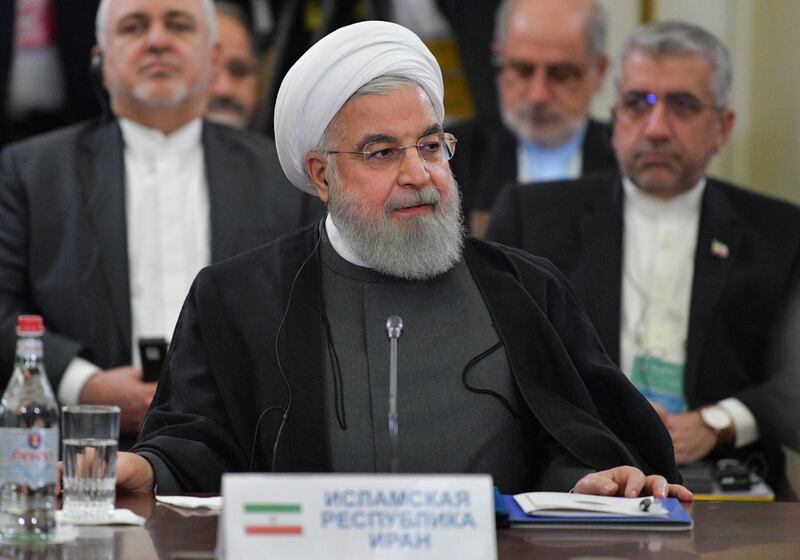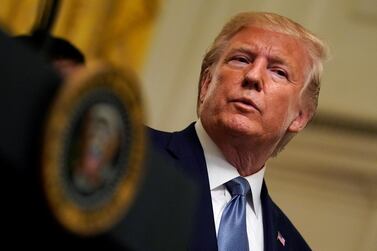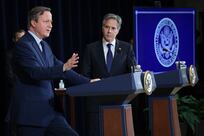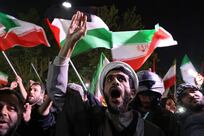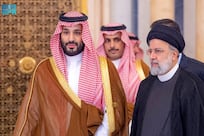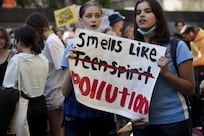Despite the hype about a potential meeting on the sidelines of the United Nations between US President Donald Trump and his Iranian counterpart Hassan Rouhani, the tete-a-tete never took place after Mr Rouhani apparently refused to take Mr Trump’s call.
However, the US and other interested parties should not be fooled by Iran playing hardball. Behind the obstinacy, rhetoric and belligerence, most notably last month's attacks on Saudi Arabia's oil facilities, is a regime in serious trouble.
The US policy of "maximum pressure" should continue, for no other reason than because it works. However, in order to be more effective, the Trump administration needs to take a page out of the Barack Obama playbook by getting other countries on board, especially China and the Europeans.
Although not expressed in such terms now, maximum pressure was essentially the Iran policy of the Obama administration. From 2012 onwards, the White House managed to lead a crippling international sanctions campaign in response to Tehran’s drive towards nuclearisation. As a result, Iran experienced high levels of inflation, unemployment, severe trade restrictions and exclusion from international financial transactions. Not only was the Iranian economy crashing but the country was internationally isolated and there were increasing stirrings of domestic unrest.
Although not constituting regime change, these conditions did lead to a change of government, with reformist Mr Rouhani defeating hardliners in Iran’s 2013 presidential elections by an overwhelming majority. Still, Washington and her allies maintained pressure and two years later, when the five permanent members of the UN Security Council – the US, Russia, China, France, UK – plus Germany, were negotiating the details of what resulted in the 2015 nuclear deal, Tehran was facing the harsh reality that it could not fund its international proxies, maintain its presence in Syria and also have an unrestricted nuclear programme.
The tragedy of Mr Obama’s Iran policy was that it squandered the success of its maximum pressure policy for what turned out to be a worthless deal. The deal did not include restrictions on missiles or Iran’s support for the Assad regime in Syria, terrorist groups and proxy militias. It also contained a sunset provision that allowed Iran to increase its uranium enrichment after 10 years.
Then US secretary of state John Kerry and his undersecretary and chief negotiator Wendy Sherman did not quite grasp the extent to which the sanctions were working. With its coffers empty and on the verge of collapse, the regime would probably not have survived without a deal. But with it in place, all Tehran had to do was stop spinning a few centrifuges and all of a sudden, it was in from the cold and able to continue financing proxies and fermenting regional instability. It could also hold westerners hostage and lock them away in its notorious Evin prison, Iran’s modern-day Chateau d’If fortress, with impunity.
Since Mr Trump withdrew from the nuclear deal in May last year and instigated his maximum pressure policy, Iran's economy is once again facing collapse. According to the International Monetary Fund, by the end of this year the economy will retract by a massive 6 per cent while inflation currently stands at 37.2 per cent. Meanwhile unemployment has crept back up to 12.2 per cent and looks set to rise. To make matters worse, unlike the post-2012 period, when oil prices were between $90 and $100 a barrel, today the cost of crude hovers between $50 and $60. This is terrible for Iran, whose energy reserves fuel its economy. In short, the economic outlook is catastrophic.
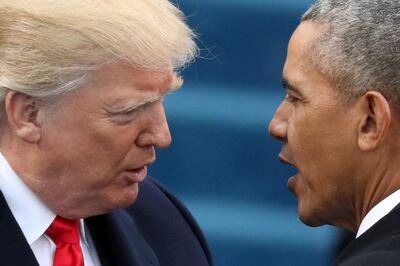
Iran also faces significant internal discord. Throughout 2017 and 2018, Iranians took to the streets in dozens of cities to protest corruption, bad governance, gender inequality, expensive foreign entanglements and even the regime itself.
However, in order to truly exert maximum pressure, Mr Trump needs to find some kind of accord with China towards Iran. This should be a matter for discussion when US-Chinese trade talks resume next week. China recently signed a $400 million investment deal in Iran’s oil, gas, transport and petrochemical infrastructure. In return, Beijing receives steady supplies of oil paid for in its own currency. If Tehran loses this vital lifeline, it will have no choice but to make major concessions.
In the meantime, Washington needs to capitalise on growing European frustration with Iran. Europe is angered by Tehran’s incremental breaches of the nuclear deal through additional levels of nuclear enrichment. Last week British Prime Minister Boris Johnson even called for a new nuclear deal, noting that there were “many defects” in the existing one. Mr Trump also needs to be patient; time is on his side but it is not on Tehran’s.
If he really wants to get a better nuclear deal than his predecessor, Mr Trump needs to seek additional international support and stick to his guns. This will give him more leverage in future talks to make a deal actually worth signing.
Dr Simon Waldman is an associate fellow at the Henry Jackson Society and a visiting research fellow at King's College London
